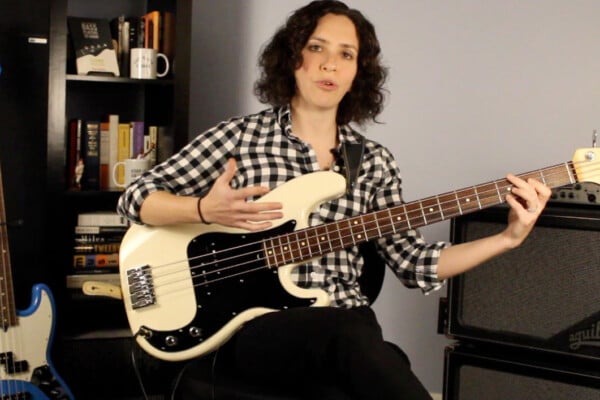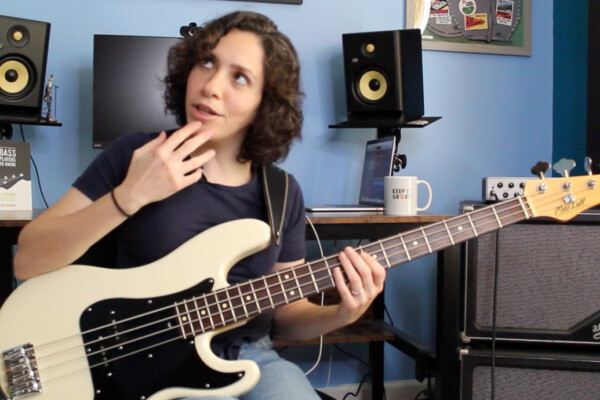More Forked Fingering Techniques: Using the Thumb
Last time we talked about playing fourths across strings using two adjacent fingers, a concept sometimes called “forked fingering.” For example:

We can, of course, use the same exact concept in the upper registers of the bass, or thumb position. For example:

As mentioned before, this can be easier to execute effectively in the upper registers than in the lower registers. When playing in thumb position, however, we can extend our “forking” options even more by addressing the part of the thumb used to depress the string.
Some players limit the dexterity of their thumb by stopping the string with the knuckle, or thereabouts. While this is surely acceptable in a great many cases, it can limit fingering possibilities and create a type of clumsiness. In certain passages, for example, using the thumb in this manner on the G string can actually get in the way of other fingers trying to play on the D string.
This can be avoided if we play closer to the tip of the thumb or more or less on the nail, depending on the size and shape of the individuals thumb. By using the thumb in this manner, we not only allow for a more controlled use of the thumb, but it can open up a new level of left hand dexterity.
One of the specific things playing toward the tip will do is allow the thumb to be used as an equal finger when applying the “forking” concept. For example:

This sort of fingering is especially useful when playing the Bach Cello Suites (for the classical players) or (for the jazzers) when transcribing solo lines from other instruments, such as guitar or saxophone.
As with the standard forked fingering, it may take some time to become comfortable with the technique, but the benefits to dexterity are worth the effort. We needn’t always play toward the tip of the thumb, of course. However, doing so can open up new possibilities and be of great benefit in certain passages.
Dr. Donovan Stokes is on the faculty of Shenandoah University-Conservatory. Visit him online at www.donovanstokes.com and check out the Bass Coalition at www.basscoalition.com.



